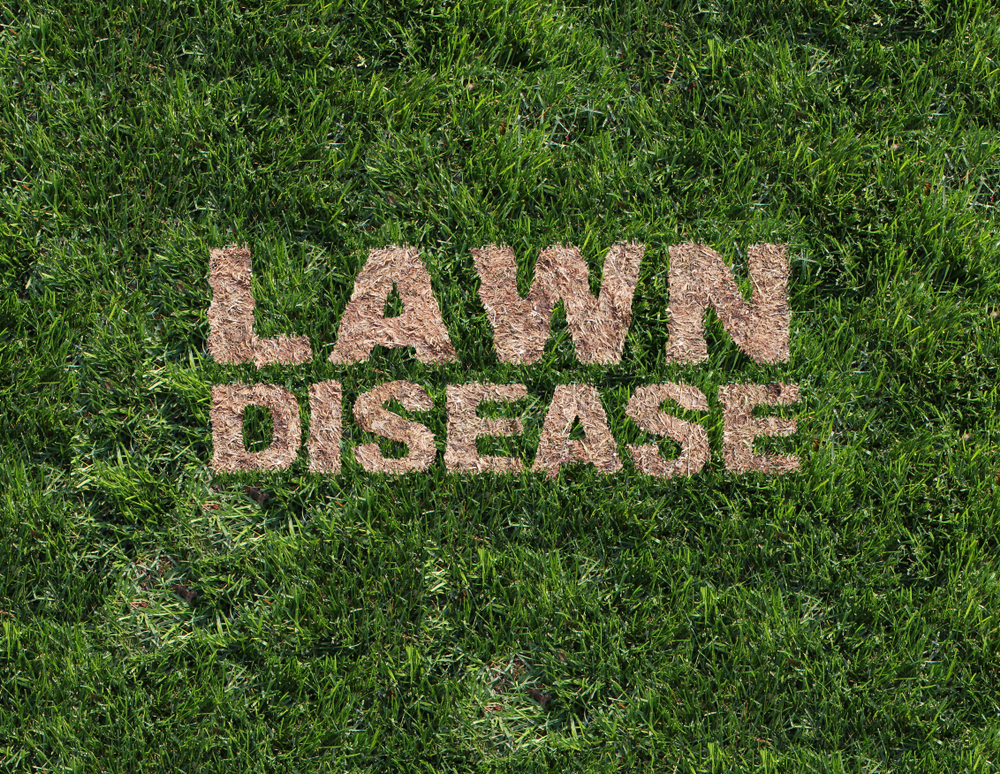
Lawns can look green, healthy, and luscious but they are not without some common diseases that can make an appearance over time.
“Lawn diseases can be hard to identify. They are often confused with other problems, like poor growing conditions, damage from fertilizer burn, dog urine, or road salt.” (Source: Government of Canada)
Your lawn is what makes your backyard and front yard appealing and it should always stay that way. Below we will highlight 5 common lawn diseases in Alberta to help you recognize and react to the diseases promptly.
1. Powdery Mildew

“Usually found in shady areas, mildew is a fungus that attacks weakened lawns. You can help your lawn by pruning back your trees and shrubs for better air circulation.” (Source: Scotts) Following proper lawn care techniques such as watering properly, mowing at the recommended height and feeding your lawn regularly can help to prevent this disease.
2. Dollar Spot
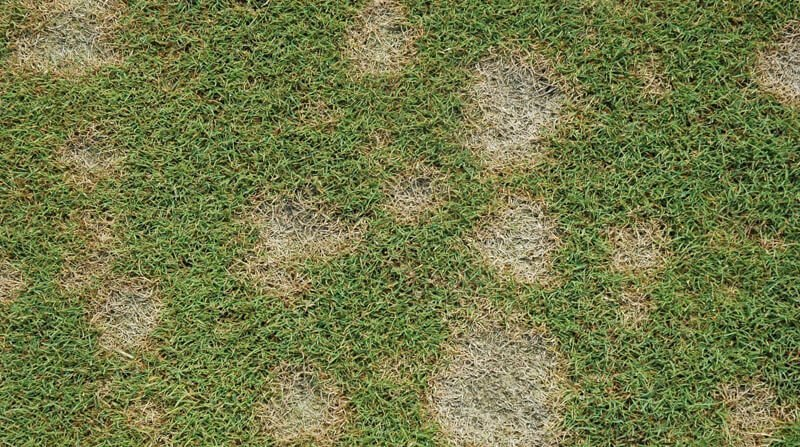
Image courtesy of Garden Seeker
As the name implies, this disease’s main characteristic is dollar like dead round spots on the lawn and is often described as a “disease of poorly nourished turf”. Usually there are multiple spots like this photo shows. This disease is prevalent in the middle of spring. Dry soil conditions and lack of turf nourishment increase the severity of this disease. (Source: Greencast)
To aid recovery after after dollar spot subsides apply nitrogen to the affected areas. For more management tips, compliments of GreenCast, click here.
Earth Smart Property Solutions offer a Lawn Smart Rejuvenation Package that will help transform your lawn back to a healthy, green appearance. This package includes using a high nitrogen-based granular fertilizer enhanced with iron. To inquire about this service or to find out if it is offered in your area, contact our office at 1-888-268-8088 or email at info@earth-smart.ca
3. Necrotic Ring Spot
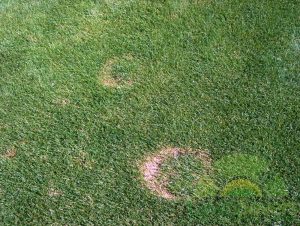
Image courtesy of LawnSavers
“Necrotic ring spot first appears as small, light-green spots and progresses to thinned, circular patches approximately 3″ to 15″ in diameter. Patches can expand up to 3′ in diameter; eventually turn brown or straw-colored. The “frog-eye” symptom of living grass within a ring may be prominent, but arcs and rings can be diffuse, especially in red fescue.” (Source: GreenCast)
“Necrotic ring spot typically develops in moist areas in spring, but may not become apparent until heat and drought stresses place a lethal stress on infected roots in the summer.” (Source: Greencast)
You can help reduce the chances of necrotic ring spot occurring by not mowing at a real low height and by making sure there is not a lot of thatch on the lawn.
For more management tips on how to avoid this disease, courtesy of GreenCast, click here.
4. Rust
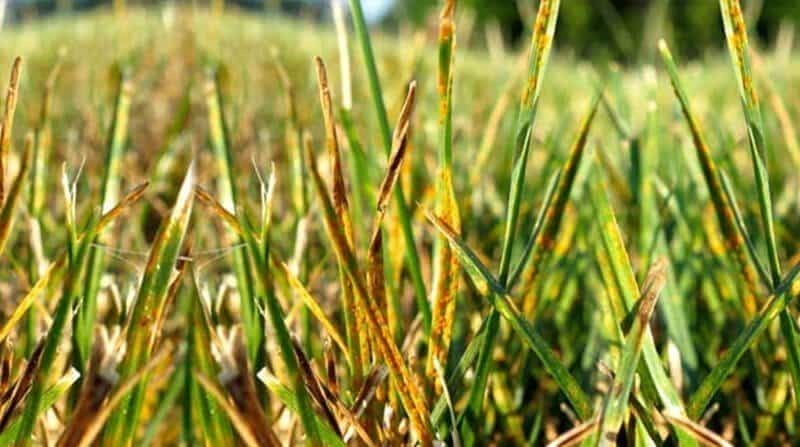
Image courtesy of Garden Seeker
“Rust diseases on grasses are caused by various species of a common lawn fungus. They are named because they give grass blades an orange-yellow, rusty appearance, and rust diseases affect a wide range of turfgrass species. Grass types commonly affected by rust are: Perennial ryegrass, Tall fescue, Kentucky bluegrass (some varieties), and Zoysiagrass.” (Source: Scotts)
Maintaining your lawn by following proper watering and fertilizing techniques will help keep your lawn from having any rust appear.
Management techniques if you have rust disease: ensure your lawn is well watered and fertilized. If you don’t see improvement within a couple of weeks, then you may need to apply a systemic lawn fungus control.
5. Snow Mould
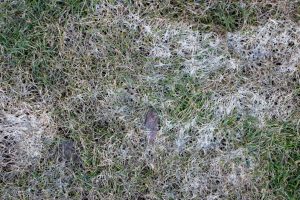
Snow mould is “a fungus that develops when the weather warms up quickly after a cold spell, says Kath Smyth with the Calgary Horticultural Society. All that freezing and melting creates a pocket of warm moist air between the lawn and the crust of snow above, which is perfect for growing mould, she explains.” (Source: CBC Eyeopener, 2021)
“Snow mould can be pink or white depending on the type of lawn, and has a pungent odour, she says. If you can’t wait the problem out until it clears up on its own, Smyth says you can simply wear gloves and rake it up then toss it in a bin. She says you can manage its growth ahead of the spring season by raking up leaves on the lawn in the fall.” (Source: CBC Eyeopener, 2021)
The Government of Canada shares that “Good mowing and watering practices help to prevent lawn diseases. So does using a balanced fertilizer with enough potassium and not too much nitrogen.”
If you require lawn care assistance, click here to contact our team and we would be more than happy to help make your lawn green and lush or click here to request a quote.
Sources:
Greencast, Disease Guide, Dollar Spot
Greencast, Disease Guide, Necrotic Ring Spot
Garden Seeker, Dollar Spot Disease in Turf: How to Identify, Cure and Control it
Garden Seeker, Lawn Rust Disease: How to Identify it, Treat it and Prevent it From Returning
Nature’s Seed, How to Avoid Necrotic Ring Spot in Your Lawn Grass
Scott’s, How to Identify and Control Rust in the Lawn
Scott’s, How To Prevent & Deal With Mildew
CBC Eyeopener Calgary, Beware smelly snow mold as your lawn thaws
Government of Canada, Dealing with lawn problems

One Comment